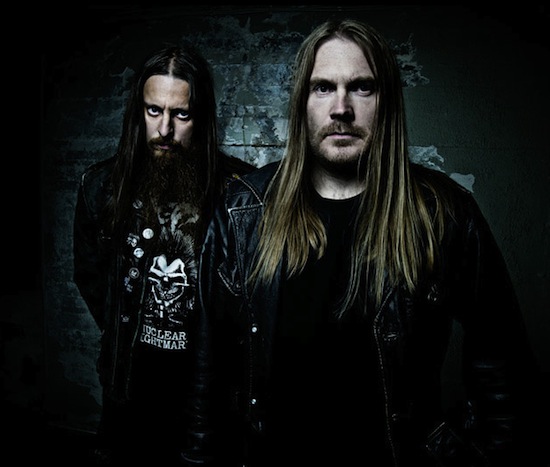For September, I’ve assembled a list slanted pretty heavily towards my own taste, which also happens to be well suited to the turning of the seasons – grim, pummelling stuff with strong currents of melody, and a lot of momentum. We’re just past the equinox, rapidly rushing toward the death of John Barleycorn and the sinking of the sun, but in the nightside world of metal, this is a time for strange new births and unholy resurrections. Spire, Sumerlands, Deathcult, and Predatory Light all offer up excellent debut full-lengths, while the mysterious Russian band Atanor coalesces in the shadows. After the departure of vocalist Chance Garnette, the infamous Skeletonwitch regenerates, decaying flesh winding round its bones again (but not too much, gotta show some bone). Winterfylleth trace their lineage back to Ulver as they turn a corner in their career, Japanese street-metallers Abigail reconnect with long-lost blastbeats, and the mighty Neurosis return to form after the world-weary Honor Found In Decay.
But as far as I’m concerned, the most important rebirth this Autumn is the new Darkthrone album, Arctic Thunder, due out October 14. This is probably their most confident, coherent, and ambitious work since 1994, when Transylvanian Hunger brought the original black metal trilogy to a close. On Panzerfaust (1995), you can hear Darkthrone caught between their loyalty to Celtic Frost and the grim, Nordic sound they’d helped create. That tension continued for another decade as they hurtled towards creative exhaustion and disillusion with their own scene.
As a wise friend of mine recently put it, Fenriz started to feel like he had betrayed what he loved most, forsaking the spirit of Heavy Metal in pursuit of nocturnal extremity. This led to the first rebirth of Darkthrone, on The Cult Is Alive (2006), where they brought their longtime love of punk rock and sloppy NWOBHM to the foreground. Over the next decade they released four more albums in this style, with a few good-to-great songs on each, but as life-affirming as it was to see Darkthrone returning to their roots and having fun, it was also hard to see them lowering expectations for themselves and then failing to meet even those, to the point where they would deliberately sabotage powerful riffs with goofy vocals and nonsensical transitions. It was unclear whether they were trying to find themselves, or just running from themselves, from the shadow of the artistic legacy they’d left back in the nineties.
In the end, as the cliché rightly puts it, Darkthrone had to lose themselves to find themselves. All those years in the wilderness now look like a necessary prelude to Arctic Thunder. Here, Darkthrone return to Norwegian Black Metal, but they gleefully shred the rule-book they helped create, re-imagining the genre as a direct outgrowth of all the sloppy vintage Metal they’ve explored over the last decade. Darkthrone have always been masters of the Infinite Riff, the riff so simple and powerful it’s worth repeating endlessly, but here they change the cryptic tremolo buzz of tracks ‘Inn I De Dype Skogens Fabn’ for something verboten in the days of Euronymous – huge, stupid, headbanging chug riffs that fuse clumsy power metal, epic crust punk, and Fenriz’ infamous “boring thrash.”
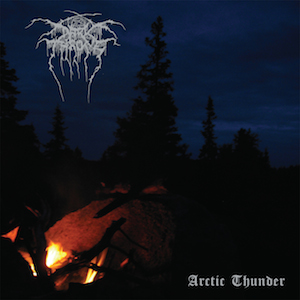
On album opener ‘Tundra Leech’, it keeps seeming like the chug is going to end, and then it keeps going, for a total of eighteen reps. Riffs like this one anchor ‘Boreal Fiends’, ‘Arctic Thunder’ and ‘Deep Lake Trespass’, and show Nocturno Culto reveling in a much heavier version of the traditional Darkthrone guitar sound.
‘Burial Bliss’ is a straight ripper, but in the Darkthronian sense – five minutes of skanking d-beat with a droning one-note riff rising upward into something strangely anthemic. I remember this change-the-riff-halfway-through trick from Dark Thrones And Black Flags (2008), where they generally used it to confuse or amuse, but on Arctic Thunder it’s used to turn ugliness into beauty. On ‘Inbred Vermin’, for instance, they tweak a vicious Frostian riff with a little melodic lift, and then make good on that promise with the mountainous, passionate doom riffs that close the song. This one also includes some classic lyrics – “We will ride the winds of the thunder god… We deny your right to live!”
Doing justice to every track would turn this into a Columnus Darkthronicus, because every one is distinctive and powerful. And yet here, Darkthrone do something they haven’t done in a long time – they thread a consistent sound and feeling throughout. Arctic Thunder is noble, grim, and passionate, but never far from the playfulness of their recent albums. The spirits of the past and present flow together into a savage joy, and Darkthrone reclaim the spirit of the young band that opened ‘Kathaarian Lifecode’ with groovy cowbell and Fenriz yelling “Nocturno Cultooooo” like a hip hop hype man. On album closer ‘The Wyoming Distance’ they lurch into motion by slowing down, like Hellhammer waiting for their drummer to catch up, and when the final feedback dies you can hear laughter echoing through the concrete Bomb Shelter.
Neurosis – Fires Within Fires
(Neurot Recordings)

While Neurosis has been far more consistent than Darkthrone since releasing their canonical material in the nineties, Fires Within Fires is also the sound of a band reclaiming its heritage. On Given To The Rising (2007), they immersed themselves in the gloom of a decaying modern world, proudly spitting their disgust. But on Honor Found In Decay (2013) you could hear them staggering under the weight of disillusion, their churning riffs slowing to a plod, their guitars wailing sullen laments. They kept their honour, but not the old spark.
That was disappointing, because Neurosis are the kind of band we turn to for torchlight in the waning watch. They’ve always excelled at wringing joy from struggle, finding the ecstasy in wrath. And this, at last, is what they do on Fires Within Fires. Here, they call up the most crushing and psychedelic extremes of their sound, integrating them more successfully than ever, while sweeping aside the post-rock malaise. What emerges is something like an armour-plated Hawkwind rumbling over everything that stands in its way. ‘Bending Light’ opens with portentous power chords but quickly swerves into a weird and uneasy jam that recalls Killing Joke at their most disorientated. Suddenly, the mist parts and the riffage erupts, repetitions stacking to titanic height. Then the roaring starts: “This restless sea/ Is breaking me / Flat on my back / The ocean lights me / Watching through the eyes of a crow / I let it guide me / I LET IT GUIDE ME.”
The album unfolds as a passage between worlds, a high-stakes shamanic journey seen through crows’ eyes. This is audible in the searching, episodic song structures, as well as in the great stylistic range traversed. On “A Shadow Memory,” Neurosis root themselves at the centre of the heathen worldview they began building on Souls At Zero. Images of standing stones and blood-coloured flames coalesce around the recurrent symbols of time as a flat disc – “the coiled serpent” and “the eye of the circle” concealed within. A synth drone ebbs and flows, oscillating like an industrial mouth-harp, and then takes over the song, ushering in a massive guitar groove. ‘Broken Ground’ begins with a lovely neofolk song along the lines of Steve Von Till’s solo stuff, but the band follows the esoteric promise of its final lines – “We seek the sun in endless night / We burn in its forbidden light” – into the churning Infinite Riff.
Spire – Entropy
(Iron Bonehead)
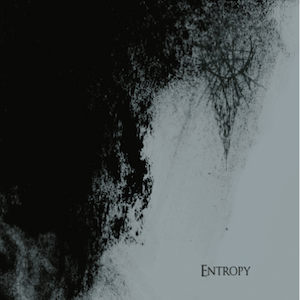
Spire’s Entropy is an ambitious, Very Serious record that immediately invites comparison to the more monumental works of the 2000s, but if you come to this album looking for a “new sound,” you are barking up the wrong tree. When Blut Aus Nord and Deathspell Omega swept away the symphonic cobwebs of the late nineties with their masses of implacably dissonant chords, weirdly echoing arpeggios, and highly processed guitar tones, they were inventing a new musical language for black metal. Now, over a decade later, Spire inhabit this language as native speakers, so that for them it is simply a way of writing songs. This allows them to be truly original, that is, to grasp the French sound at its origins and take it in a very different direction than its originators and their droves of imitators have taken it. For instance, Spire brings their half-concealed hardcore/screamo influences to the foreground. At times, Entropy sounds like Converge’s Jane Doe or Buried Inside’s Chronoclast, raised to an inhuman cosmic scale. In that sense, it is pretty close to a more abstract version of Aosoth’s IV: Arrow In Heart, but that hardly does this record justice – its real power comes from songwriting.
In contrast to the fanatical maximalism of Aosoth and D.S.O., Spire favours sparse majesty, building each song around a handful of themes that stand out not so much because they are Big Hook or Sick Riffs but because they are clearly defined and organically interrelated. Second track ‘Labyrinthine’ is a microcosm of the whole album. It begins with a single seed, just five notes chiming in a void, but that seed immediately blossoms, doubling itself, then stretches into a new melody, then intertwines with another variation on the theme, and so on. It’s only halfway through the song that the real riff erupts, standing forth as the destiny of those first five notes, and now it looms crazily over a thunderous low-end (bass and throat singing). These distinct, contrapuntally moving lines create a sense of vast vertical space. The song ends, dying into drone. Then it returns from the chaos, utterly transformed, storming ahead in 6/8, and yet still sprung from the same seed.
Entropy is a real work of art, and probably the deepest thing on my list this month.
Sumerlands – Sumerlands
(Relapse)
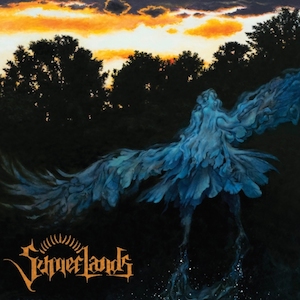
Much like the long-legged mythical bird taking flight on its cover, Sumerlands is a strange and majestic beast. When Columnus co-writer and mistress of the Old School Louise Brown recommended Sumerland to me, she compared them to borderline-spandex bands like RATT, WASP, and Dokken, and she was right of course – Sumerlands build their sound around frenetically palm-muted riffs and ornate leads that could have been written by Randy Rhoads on a good day, and their production is geared towards the vast arenas of yore. But what really piqued my interest was the band name, which references a deep cut on Fields of The Nephilim’s Elizium. “If they’re playing some goofy party metal, how can this have anything to do with The Neph?” I wondered. The answer comes about thirty seconds into album-opener ‘Seventh Seal’, as a riff vaguely reminiscent of Van Halen’s ‘Ain’t Talkin’ Bout Love’ takes a dive into a brooding chug pattern and vocalist Phil Swanson beckons the oncoming apocalypse in a stentorian bellow that is anything but hair metal. Throughout the record, Sumerlands’ downcast melodies come together with with fist-pumping rhythms to create a weirdly solemn excitement, a crossing-the-threshold feeling that really does evoke the Nephilim. With their blend of Heavy Metal pyrotechnics and serious atmosphere, this band could be considered fellow-travelers of Solstice and Atlantean Kodex (Swanson sang on Kodex’s first recording). But Sumerlands are too fast and too shamelessly pop-oriented for the Epic Doom tag. Gripping and absurdly fun, this album has to be heard to be understood.
Predatory Light – Predatory Light
(Invictus, Psychic Violence)
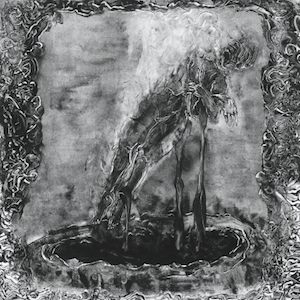
On their demos and their split with Vorde, Predatory Light played a strain of deliberately paced psychedelic black metal based on the contrast between trebly, reverb-heavy melodies and brute vocals submerged in the mix, a ghostly counterpart to the recent wave of “cavernous” death metal. This was highly atmospheric music, but a little remote and spindly for my taste. When I saw them at last year’s Dissociative Visions fest, however, Predatory Light vomited forth a vast deluge of Metal, and I am happy to say their debut full-length continues in this direction without sacrificing artistry. On ‘Laughing Wound’ and ‘Lurid Hand’, they introduce a sound based on the back-and-forth between wild, sinuous leads and hammering unison power chord riffs, the former akin to a more muscular Negative Plane, the latter pretty close to war metal – in short, perfect for Invictus. Vocalist/guitarist Luke Sheppard, his growls and anguished yells now forward in the mix for maximum power, draws on short, incantatory lyric-clusters that he repeats and recombines as the music demands – a cool and original approach. On ‘Path Of Unbeing’, where the record really takes off, his chthonic chanting meshes with a spiralling melody to hypnotic effect. That melody seems to spawn every following riff with the force of necessity, escalating until the chant gives way to pure “Aaaaagghhhh!” Like this track, the whole album builds to the end, so I would be remiss not to mention the towering evil of ‘Membrane’ and the triumphant thrashing of ‘Sacrum’. It’s a rare, strong move for a band to evolve by taking off the kid gloves, and for Predatory Light it has definitely paid off.
Deathcult – Beasts Of Faith
(Invictus)
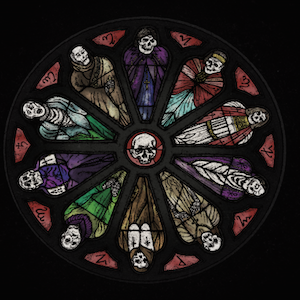
Death metal. Sounds like death metal. Uuuuuuuurrrrrrghhh!
This really does just sound like someone’s total vision of raw, ripping DEATH METAL prior to 1992, without any of the egregious Entombed-worship of recent years. As far as naming influences, Deathcult clearly listen to raw, blasting American stuff like Repulsion and Necrovore, but to me, at least, they sound a lot Sweden’s dark horses Grave. Beasts Of Faith has the simplicity, focus, and drive of Into The Grave. Like that underrated classic, this is an album where no single riff is more important than the rapidly snowballing power of the whole. It’s propelled by relentless thrash beats and d-beats, occasional blastbeats laying on colossal weight without breaking the charge. My favourite track in this vein is the beautifully named ‘Hammer Of Golgotha’. But, like Grave, Deathcult know when to whip around into a jackhammer groove, as on the extremely moshy title track. On ‘Death In July’ (heh heh) and some of the later tracks, they open up into subterranean vastness and borrow some Dismember leads, but never in a way that distracts or detracts from this band’s very clear agenda.
Winterfylleth – The Dark Hereafter
(Candlelight)

There’s no more fitting band for autumn’s shifting skies than Winterfylleth, whose name is Anglo-Saxon for the month of October: literally, “the winter full-moon.” This is Winterfylleth’s fifth full-length in eight years. Coming on the heels of this prolific period, during which they hacked and hewed their way to the top of the UK black metal pile, it seems perfectly acceptable that The Dark Hereafter plays more like an extended EP, consolidating both the aggressive and atmospheric sides of their sound. The title track comes ripping in with a tremolo fanfare that heralds the bite of axes in the shield wall, then rises into a gold-gleaming melody that wheels over the battlefield from a great height. Stern and martial, yet strangely tenderhearted, this is Winterfylleth distilling their strongest points from The Threnody Of Triumph and The Divination Of Antiquity. On ‘Pariah’s Path’ they work a little differently, developing a lilting arpeggiated melody over the course of nine minutes, and proving that they still have something in the bag at that crucial six-minute mark, when two answering themes carry the song to a new emotional depth. And despite its foreboding title, the record closes on a lovely note with a cover of the first track from Ulver’s Bergtatt. While Winterfylleth play it too straight to change anyone’s understanding of the original, this does the other thing a cover can do – change our understanding of the band doing the covering. I, for one, had never associated Winterfylleth with Ulver – always with Walknut and Drudkh – but as soon as you hear those swelling chords their inheritance becomes clear.
Atanor – Atanor
(Iron Bonehead)
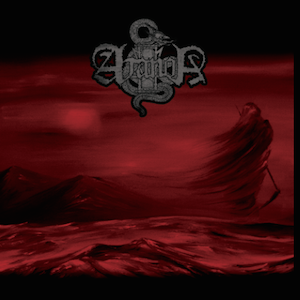
Atanor play storming, traditional black metal colored by an idiosyncratic sense of harmony. They work with dense chords that turn towards both consonance and dissonance, often at the same time, spiraling off into weird leads that come pretty close to death metal. But this is a far cry from the rote disharmony of DSO and Portal clones, because it is bound together by a classical sense of melody and momentum that ties it to the Scandinavian old guard, especially the vastly underrated Kvist. From menacing chord-walls, ‘Storm Of Black Fire’ rises into a scything chorus riff that suddenly opens up in a gorgeous way. In ‘Mystical Rays Of Darkness’, a stirring, heroic buildup drops into a merciless Satanic march in the vein of Emperor or Dissection. Interspersed with all this are a lot of crunchy chug riffs and satisfyingly choppy rhythms, and all the parts come together on the epic album-closer, ‘Revelations’. Atanor’s vocals are vehemently snarled in audible Russian, bringing out the power of the language, but if this is has anything to do with Slavonic black metal, it is a new vision of what that might sound like, its völkisch lyricism transmuted into something colder, more unearthly – where the high steppe bleeds into the dread Plateau of Leng.
Abigail – The Final Damnation
(Nuclear War Now!)

Where Darkthrone had to lose themselves to find themselves, Abigail’s return to origins seems like the next logical phase in what has always been a very clear trajectory. Since Forever Street Metal Bitch in 2003, they’ve released six full-lengths and innumerable splits and EPs, continually refining and remaking a style they call “street metal” that fuses the rockish swagger of Motörhead and Venom with the face-melting tempos and wretched vocals of Teutonic thrash and eighties punk. As much as The Final Damnation continues in this direction, it also raises the brutal spirit of their 1996 debut, Intercourse And Lust (1996). Lest I ruin pleasant surprises, I will say only that there are a lot of breakneck blastbeasts and classically Evil tremolo riffs, played in really fun and creative ways against the more rockin’ tendencies that still anchor the songs. On ‘Sex And Metal’ Abigail throw in some faux-operatic cleans, beating the Japan-worshipping Syphilitic Vaginas at their own (excellent) game. The highlight, however, is ‘Whisky Coke And Bitch’, whose bombastic introduction explodes into a metalpunk ripper with the rousing chorus, “Whisky, coke, and bitch, I am ready to fuck!” The glory of Abigail is the glory of excess, and not just in that sense. Here are two formidable musicians pouring all their talent into a retro subgenre that is obviously too “easy” for them, playing the living fuck out of it and pushing it to such absurd levels of intensity that it becomes a style unto itself.
Skeletonwitch – The Apothic Gloom
(Prosthetic)
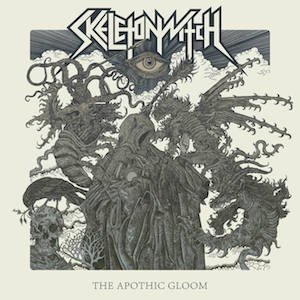
Like their forefathers Immortal, Skeletonwitch never sat easily on the fun side of the metal spectrum. The speedy riffcraft that made their songs so exiting also made them rabidly aggressive, and the Dissection-esque sense of melody that gave them incredible hooks also gave their music a genuinely dark undertone. The leader of this two-pronged attack was Chance Garnett, who changed up throat-shredding rasps with brutal death growls. Sadly, Garnett recently parted ways with his old band, and this EP sees them working in a new vocalist, Adam Clemans of Wolvhammer, who brings the kind of impressive but polished roar popular on the “dark” side of nowadays hardcore. Of course, it’s understandable that he’s still finding his place in this band, and the songwriting core, Nate Garnette and Scott Hedrick, take this change as an opportunity to push Skeletonwitch further towards the brooding atmospheres they’ve always flirted with. The production is more spacious and remote than the punchy, loudness-warring sounds they’ve favored in the past, and they dial back the thrash in favour of arcing Gothenburg melodies and textured trem riffs played at a controlled midtempo. But Skeletonwitch still rip. The songs are crammed with so much rhythmic and melodic detail that they feel twice as fast. On ‘Red Death, White Light’ they lock into a heavy d-beat anchored by mobile, grooving bass, even as the guitars play bittersweet harmonies that would fit nicely on the new Winterfylleth. For me, though, the clear highlight of the EP is ‘Black Waters’, where Skeletonwitch raise the spirit of Sacramentum and conjures stormy Gothic drama that reminds me of pre-suck AFI (ok, maybe it’s the gang vocals, too). Clemans’ vocals really work here, too: “THE CEMETERY BLOOM, IS RISING, FROM UNHALLOWED GROOOOOOUND.” Excellent for those cold, windswept fall nights when you’re feeling grim as hell but still heading to the bar.

